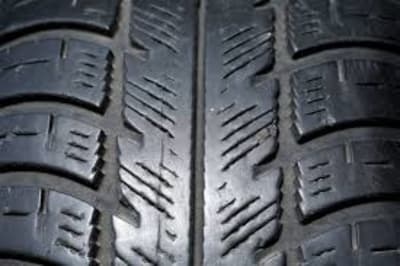Legal Tyre Tread Depth And How To Check It
The tread depth of your vehicle’s tyres is important in keeping you safe on the roads, so there are laws in place to make sure that you maintain it. UK tyre tread depth law is taught as part of the process of learning to drive but, if you’ve forgotten what the rules are, read on to get a refresher.

What is tyre tread?
Tyre tread is the name given to the indentations and grooves in the rubber on the outside of your vehicle’s tyres. It’s responsible for keeping your tyre in contact with the road in all conditions and maintains traction with the road surface so you can drive and brake effectively.
Without sufficient tyre tread, you’re at much higher risk of skidding, aquaplaning, and misjudging proper braking distance.
Most tyres have a similar tread pattern, with longitudinal grooves running along the outside of the tyre which prevent water and other hazards on the surface of the road from affecting traction.
What is the minimum legal tyre tread depth?
The minimum legal tyre tread depth according to the UK police is currently 1.6mm across the middle three quarters of your tread, all the way around the circumference of the tyre.
However, this is the absolute legal limit, and tread depth that’s even a millimetre below 1.6mm will mean that you have ‘bald tyres’ that break the law and put both yourself and others at risk. Keep in mind that tyre tread doesn’t magically become less effective once it becomes shallower than 1.6mm, every millimetre it loses from its original depth makes it less effective at gripping the road surface.
It’s for this reason that most vehicle and tyre manufacturers recommend changing your tyres when the tread depth reaches around 3mm, ensuring that you’re always close to having maximum traction.
How to check tyre tread depth
There are several ways to measure your tyre tread depth. The first is to give it a visual check, using the wear indicators in the tread to figure out how deep it is. There are horizontal bars in the tread grooves of most tyres, evenly spaced around the circumference, which will be level with the top surface of the tyre when you’re nearing 1.6mm.
The second method of checking tyre tread depth, and the most accurate, is to use a tyre tread depth gauge. These small instruments can easily fit in your glovebox and provide a simple and quick method of measuring tread depth. All you have to do is insert the metal bar of the gauge into the groove in your tyre and take a reading from the screen.
Finally, you can use a more readily available 20p coin to check your tyre tread. Insert a regular 20p coin into the lowest point of your tread grooves, if the tyre obstructs the outer metal rim of the coin, your tyre has at least 3mm of tread, but if you can see the outer rim, it has less than 3mm of depth.
Bald tyre fines and penalties
If you’re found to have tyres with tread depth below the legal limit of 1.6mm, you will have broken the law by having bald tyres that endanger yourself and other drivers on the road. The penalty for driving with faulty tyres is currently set as a level 4 offense on the standard scale, which means you’ll receive 3 penalty points on your licence and will be fined £2500.
This penalty and fine is applicable to each faulty tyre that you have, so if you have several tyres that have fallen below the minimum tread depth at the same time, you could be fined up to £10,000 and given 12 penalty points – enough to lose your licence.
06 Jun 2019
Did you enjoy this blog post?
|
12 people found this review helpful
